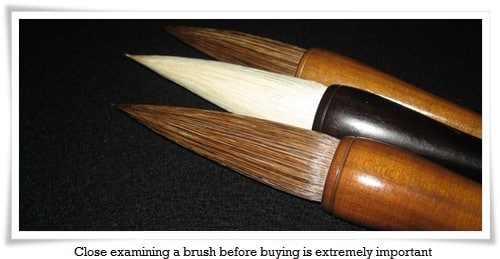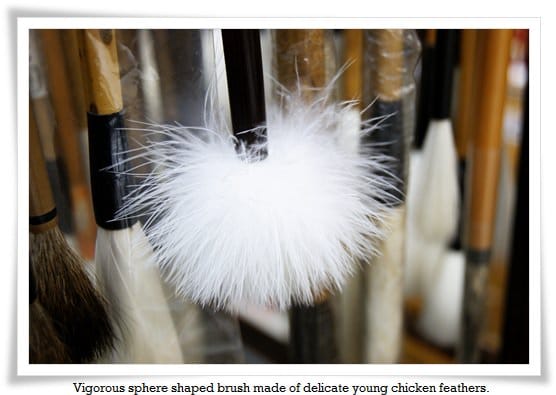In Japan, it is said that brush is to be chosen according to a rule of four virtues. These are:
- 尖 (sen) – The brush tip must be sharp and pointy. There should be no irregularities in symmetry or thickness of hair of the tuft tip. This is especially important for brushes used for writing that requires precision (fine lines in sumi-e, standard script, etc.)
- 斉 (sei) – The brush tuft ought to be well arranged. In other words that hairs are well organized and do not stick out, they are not broken and are of a uniform shape and quality.
- 円 (en) – The brush tuft needs to be well rounded and symmetrical in its cross section. While looking at the brush from its tip, the tuft should form a perfect circle. Also, with the hairs released, the tuft should form a perfect cone shape with a flat top.
- 健 (ken) – The brush needs to be healthy and full of vigour. The hair (especially at the tuft base) should be flexible and responsive. No damaged hairs should be visible. Also the brush axis should be straight and free of cracks. Bamboo shafts tend to crack, especially when they get wet during the washing of the brush.
Expensive brush manufacturers usually offer to change the brush shaft free of charge.
On top of that, the brush needs to suit its purpose. Depending on what we intend to write or how we want to do it, different types or sizes of brush should be chosen. Calligraphy is infinite, and so are the brush choices. It may take years before a calligrapher senses instinctively which brush goes well with his style and personality.


